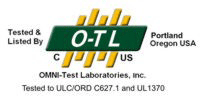Searching for a contractor or a licence number: consult the Licence holders' repertory.
Searching for a contractor or a licence number: consult the Licence holders' repertory.
Searching for a contractor or a licence number: consult the Licence holders' repertory.
The popularity of ethanol fireplaces is a growing concern for fire safety authorities. When such equipment is not approved, or when it is used without due regard for safety, it can pollute the ambient air and cause serious burns, fires and, in some cases, carbon monoxide poisoning.
Installing an ethanol fireplace is straightforward, since all you have to do is assemble a few parts and anchor the unit. But carefully follow all the manufacturer’s instructions:
Important! Ethanol fireplaces are decorative objects. They must not be used as heaters. Improper use of ethanol fireplaces can result in burns and fires.
To avoid accidents:
In theory, ethanol is a clean-burning fuel. In reality, certain conditions in a fireplace—such as overly high or low combustion temperatures—can result in incomplete combustion, producing carbon monoxide (CO) and other harmful gases.
Although ethanol is similar to the fuel used in fondue burners, the risk is higher due to the larger volumes. Since no chimney is required, toxic substances can build up, especially in higher-power units. That’s why having a CO detector is essential.
Also known as bioethanol and ethyl alcohol, ethanol gives off flammable vapour at room temperature.
When filling or if spilled, liquid ethanol can evaporate, producing dangerous vapours. Since they are heavier than air, they can settle. In high enough concentrations, these vapours can ignite upon contact with a flame.
That’s why when you own an ethanol fireplace, it’s important to have a fully operational portable fire extinguisher and a smoke detector.
Take care when filling:
It’s recommended to never store more than 5 litres of ethanol, and avoid keeping any fuel in a room with a fireplace or near a heat source.
Also store it at room temperature and out of reach of children.
No matter the model you choose or where you buy it, your fireplace must meet the Canadian standard, ULC/ORD-C627.1-2008, Unvented Ethyl Alcohol Fuel Burning Decorative Appliances.
Here are some examples of certification seals or labels on ethanol fireplaces that attest to their compliance with the Canadian standard:

Beware of cheap, uncertified equipment. It’s possible that:
For further information or to file a complain or report, visit the Contact the RBQ webpage.